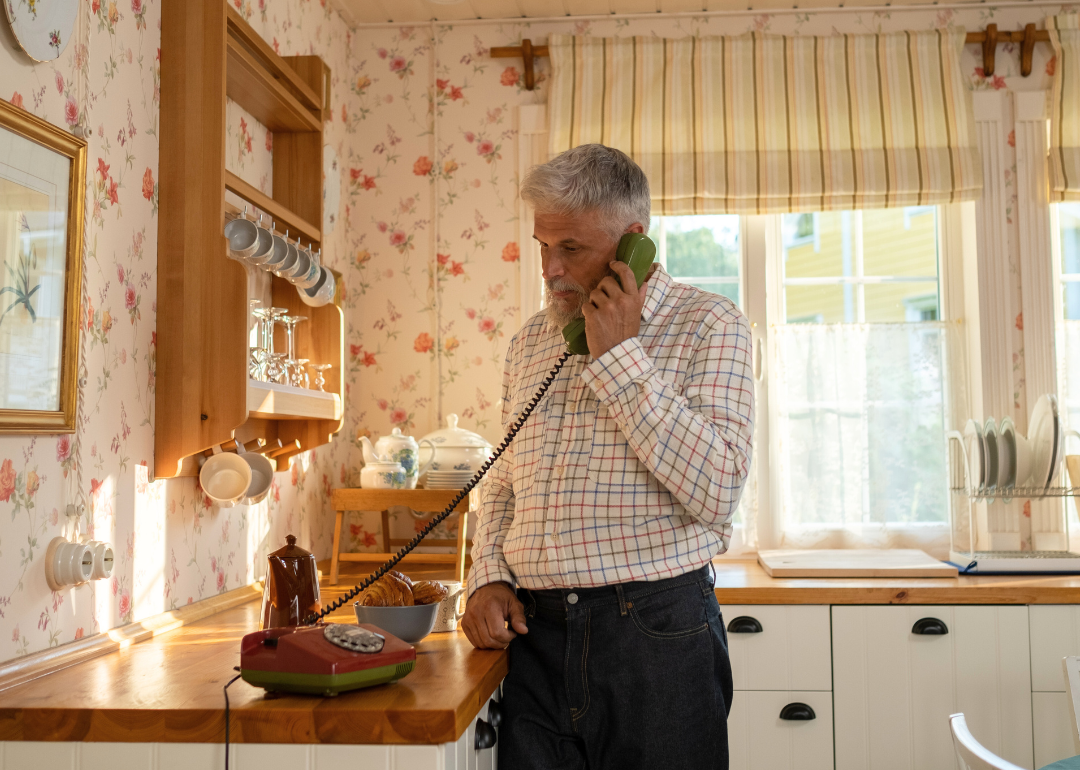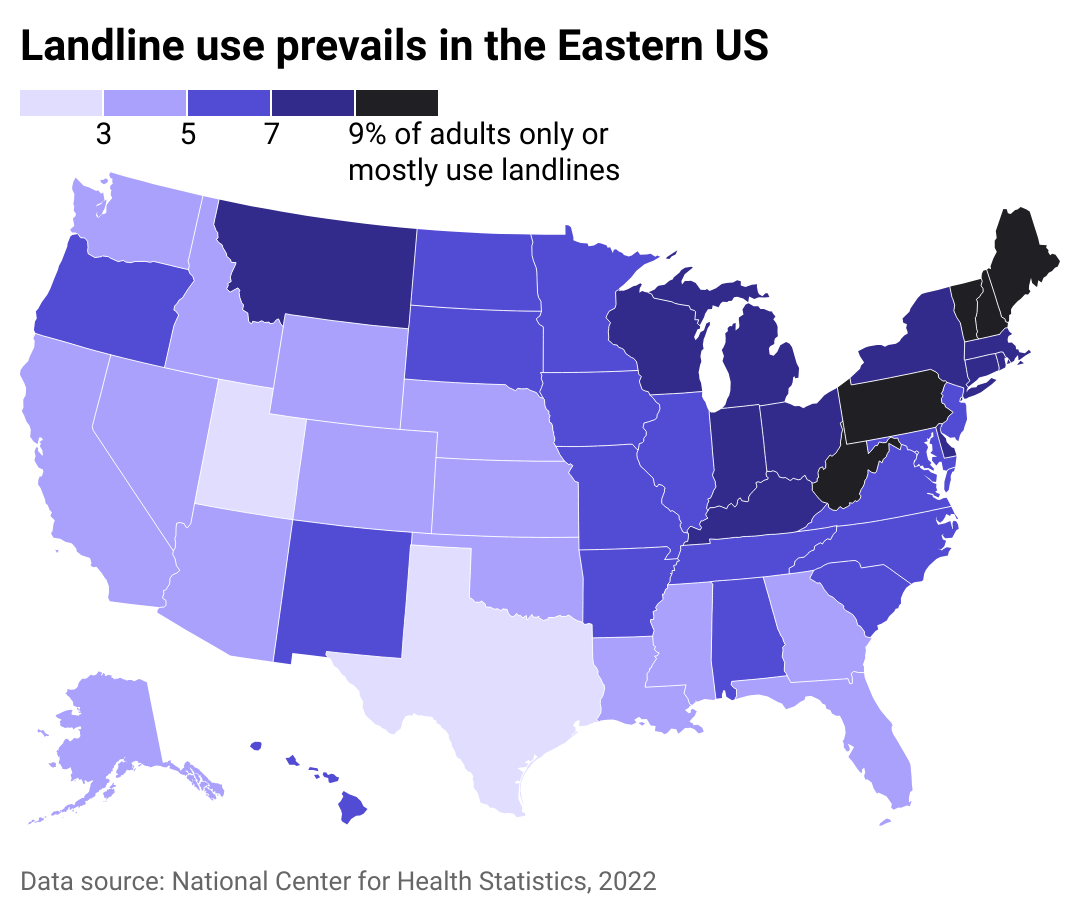
Landlines may seem obsolete, but people in these states pick up their home phones the most
This story originally appeared on Spokeo and was produced and distributed in partnership with Stacker Studio.
Landlines may seem obsolete, but people in these states pick up their home phones the most
On a planet that holds more cellphones than people, it might be hard for some to imagine anyone still has—or uses—a landline.
Today, many may consider landline phones obsolete. However, this legacy technology remains a staple in households across the country, influenced in part by geography. Spokeo analyzed landline usage across the U.S., using National Center for Health Statistics data to identify the states with the most homes dependent on landlines.
Not long ago, leashed phone calls, eavesdropping siblings, busy signals, and getting kicked off the line were typical experiences in many households. However, following a century of landline dominance, fewer than 24% of adults and 13% of children now live in households with landlines.
Telephones were popularized in the early 1900s and remained the preeminent mode of communication in the U.S. until 2004, when cellphone users eclipsed landline subscribers. As of December 2023, nearly 9 in 10 (87%) children and at least 3 in 4 (76%) adults live in wireless-only households. Pew Research Center data shows that 9 in 10 U.S. adults have smartphones and another 7% have mobile phones that are not smartphones. Among younger adults, smartphone access is also nearly universal.
For some, cellphones and wireless plans remain too expensive or too complicated. Others value the dependability of traditional copper-wire-enabled landlines, which function during a power or network outage as long as they are corded or charged. For those living in areas with little or no wireless reception, landlines remain the only real option.

Even in most popular areas, less than 15% of adults use landlines
Today, the highest shares of landline usage are found in the Northeast and Midwest. Vermont tops the charts with 13% of adults only or mostly using landlines, followed by West Virginia (12%) and Maine (10.9%).
These states have some of the highest concentrations of people over 65, who account for some of the last holdouts on landlines. The share of adults over 65 who only or mostly use landlines is five times that of the following age group (45- to 64-year-olds) and over 10 times the average of all other age groups.
Regionally, landline-loving areas are more prone to power outages from weather events, such as high winds, rain, and snowstorms. For their residents, prioritizing landlines is a matter of safety, and they can be critical devices for communicating and reporting emergencies during bouts of dangerous—and sometimes deadly—weather. However, fewer landlines are actually equipped with the traditional copper-wire lines that work without electricity as providers are shifting toward internet-enabled voice calling. Over time, that likely means fewer people will keep landlines for this particular purpose, instead shifting toward satellite-connected emergency services.
In the Northeast, there's a simpler explanation for the hold on landlines: Residents haven't had a reason to cut the cord. The Washington Post reported that most people discontinue their landlines when they make larger transitions, such as switching to broadband internet. However, for customers of Verizon, the predominant landline provider in the Northeast for decades, that transition largely occurred in the 2000s, when landlines were still prominent. Holding onto landlines, then, is less of a death grip and more of an effortless embrace, which Verizon tends to foster. That also tracks with NCHS data, as there's considerable overlap between states that only or mostly use landlines and states with the most dual landline and wireless users.
Public funding from the Bipartisan Infrastructure Law, American Rescue Plan, Consolidated Appropriations Act, and annual budgets put $83.1 billion toward expanding affordable and reliable high-speed internet access across the U.S. during the Biden administration—a program which ended June 1, 2024. The scope included building out broadband in rural and other underserviced areas.
These investments may have led even more people to drop landlines as they gained new broadband access and made the transition. Moreover, as younger generations increasingly lack nostalgia for landlines and are less exposed to dated technology, it will continue to be phased out of the American lifestyle.
Story editing by Shannon Luders-Manuel. Additional editing by Kelly Glass. Copy editing by Paris Close. Photo selection by Lacy Kerrick.



